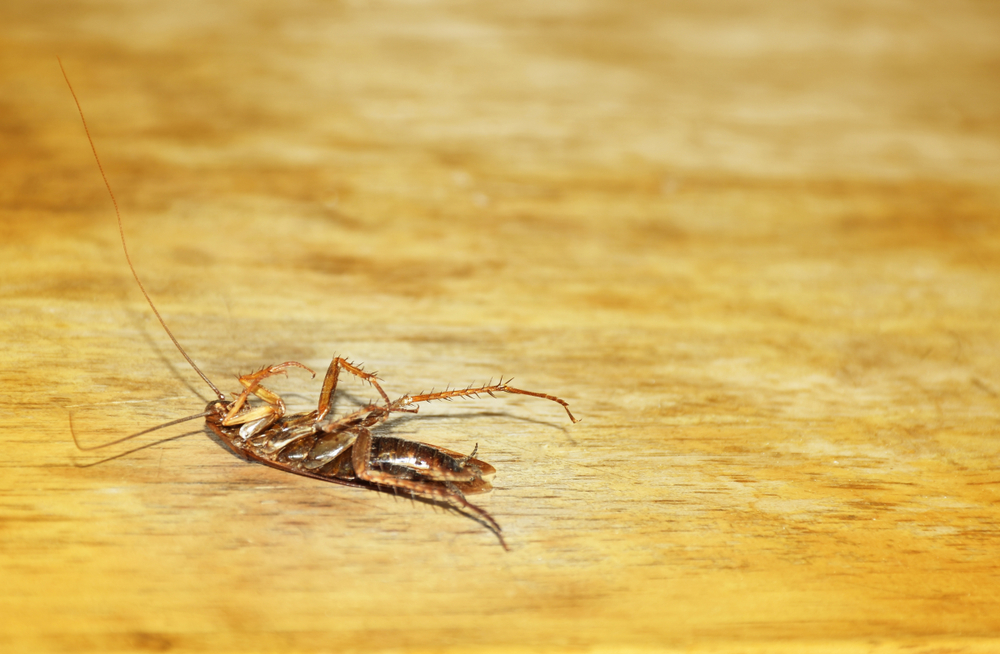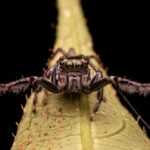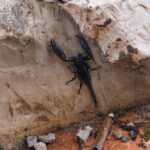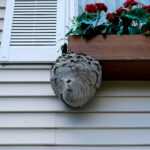Understanding the Different Types of Roaches: A Helpful Guide
Seeing roaches at home? Learn about the different types of roaches, how to identify them, and ways to control them.
- Cockroaches can be classified into domestic species, which thrive indoors, and peridomestic species, which prefer outdoor environments, highlighting the need for targeted control strategies.
- Key cockroach species in North America include German, American, Brown-banded, Oriental, and Smoky brown cockroaches, each requiring specific identification for effective management.
- Effective cockroach control involves sanitation, exclusion, and professional services, emphasizing a multi-faceted approach to eliminate infestations and prevent future occurrences.
Domestic and Peridomestic Roaches
Cockroaches have evolved to thrive in environments closely associated with humans. Domestic cockroaches, such as the German cockroach, are adept at living indoors, particularly in places with high human activity like kitchens and bathrooms. These pests can spread diseases and trigger allergies, making them a significant concern for households and businesses alike. They are commonly found in areas where food is prepared, moisture is abundant, and warmth is present.
On the other hand, peridomestic cockroaches, such as the Oriental cockroach, typically inhabit outdoor environments with minimal human interaction. They prefer damp, dark areas like basements and crawlspaces. While they might not come into direct contact with humans as frequently as domestic cockroaches, their proximity to living spaces can still pose a threat.
Understanding the habitats and behaviors of these two categories is crucial for effective cockroach control.
Common Species of Cockroaches in North America
North America is home to several prevalent species of cockroaches, each with unique characteristics and habitats. Among the most common are the German, American, Brown-banded, and Oriental cockroaches. Each of these species has adapted to thrive in different environments, making it essential to identify them correctly for effective management.
German cockroaches, for instance, are notorious for their rapid reproduction and preference for warm, humid areas within homes. In contrast, American cockroaches are larger and often found in both indoor and outdoor environments, particularly in moist, warm areas. The Brown-banded cockroach, with its distinctive banding, prefers warmer indoor environments, while the Oriental cockroach is typically found in damp, dark locations.
Understanding these species’ habits and appearances is not just a matter of curiosity; it’s a critical step in combating infestations. Identifying these common roaches allows for targeted actions to manage and control their populations effectively.
German Cockroach
The German cockroach (Blattella germanica) is often considered the most troublesome cockroach species in North America. These half-inch long, bronze-colored pests are easily identifiable by their smaller size and the two dark stripes running down their backs. They have a particular affinity for warm, humid environments, making kitchens, bathrooms, and pantries their favorite haunts. Cockroaches German cockroach are particularly adept at thriving in these conditions.
One of the most alarming aspects of German cockroaches is their rapid reproduction rate. A single female can produce up to 48 eggs in an ootheca, leading to exponential german cockroach populations growth. This rapid reproduction, combined with their preference for human habitats, makes German cockroaches a formidable adversary in any home or business setting.
Brown Banded Cockroach
Brown-banded cockroaches are another common pest, often found hiding in warmer areas of homes and buildings. These cockroaches are about the same size as German cockroaches but can be distinguished by their light brown to brown color and faint V-shaped bands on their dark brown wings. They are known for inhabiting electronics, furniture, and rooms with higher temperatures, avoiding cooler, damp areas. The brownbanded cockroach is particularly adept at thriving in these environments.
A mature female brown-banded cockroach can produce up to 14 egg cases, each carrying up to 18 eggs. It takes about 95 to 276 days for these pests to develop from egg to adult.
Notably, adult males can fly and are nocturnal, often avoiding light and preferring to hide behind objects and inside furniture.
American Cockroach
The American cockroach (Periplaneta americana) is the largest species typically found in homes, with adults growing up to 53 mm in length. These reddish-brown insects are easily recognizable by the yellow bands behind their heads and their considerable size, measuring approximately 4 cm (1 1/2 inches).
Originally hailing from Africa, American cockroaches now thrive in warm, humid environments such as kitchens and bathrooms. They have a relatively long lifespan, averaging around 700 days but potentially living up to 1,370 days in optimal conditions.
While they are considered poor to moderately good fliers, their resilience and adaptability make them a common household pest.
Oriental Cockroach
Oriental cockroaches, also known as water bugs, prefer damp and dark areas like basements and crawlspaces. These pests are dark brown or black, approximately 2.5 cm (1 inch) long, and have wide, flat bodies. Their preference for moist environments makes them a common sight in areas with poor drainage or high humidity.
The development cycle of Oriental cockroaches is relatively long, taking about 18 months from egg to adult. Females produce egg cases around 8 times during their lifespan.
These cockroaches can potentially carry diseases, adding to the importance of managing their populations effectively.
Smoky Brown Cockroach
Smoky brown cockroaches are often found in humid environments and can enter homes through open gaps and windows. These pests prefer high humidity and heat, making them comfortable in environments that mimic their outdoor habitats. They are particularly adept at finding entry points in homes, such as gaps in windows and doors.
Understanding the habits and preferences of smoky brown cockroaches can help homeowners take preventive measures. Sealing potential entry points and maintaining lower humidity levels reduces the likelihood of these pests invading your space.
Identifying Cockroach Infestations
Identifying a cockroach infestation early can save you from severe infestations and extensive damage. One of the most telling signs of a cockroach infestation is the presence of droppings, which resemble small specks akin to coffee grounds or black pepper. These droppings are often found in various locations, indicating where cockroaches hide and frequent.
Another significant indicator of an infestation is the presence of cockroach egg cases, or oothecae, which can contain anywhere from 10 to 50 eggs. These egg cases are typically found in hidden or dark spaces, making them harder to detect without a thorough inspection. Additionally, cockroaches shed their skins multiple times before reaching adulthood, so finding shed skins can also signal an infestation.
A noticeable odor is often associated with a high roach population, arising from their secretions, droppings, or decomposing bodies. This odor, combined with the other signs, can help you pinpoint the severity and location of the infestation, enabling you to take swift action.
Effective Cockroach Control Methods
Effective cockroach control requires a multi-faceted approach. Understanding the habitat preferences of different roach types aids in targeted pest management strategies.
Utilizing multiple control methods is essential for managing cockroach populations, including:
- Sanitation
- Exclusion
- Bait stations
- Chemical treatments
Professional pest control services play a crucial role in managing infestations by targeting them at the source and implementing preventive measures for future protection. These experts provide not only immediate elimination but also long-term solutions to ensure a healthier living space free from disease-carrying pests.
Sanitation
Sanitation is the first line of defense against cockroaches. Maintaining cleanliness reduces the risk of cockroach infestations by removing all sources of food and water. Thoroughly cleaning kitchens, especially grease areas, is vital for cockroach control. Methods such as steaming and vacuuming can also contribute to effective sanitation.
Conditions like leaky pipes and improper waste management contribute to larger cockroach infestations. Ensuring food is stored properly in tight containers can prevent cockroach access. Managing humidity levels by using dehumidifiers can help control cockroach populations, and a clean environment also reduces the risk of allergies from cockroach-related allergens.
Good sanitation practices improve the effectiveness of pesticides, making your cockroach control efforts more efficient. Keeping your home clean and dry significantly reduces the likelihood of a cockroach infestation and creates a healthier living environment.
Exclusion
Sealing entry points is vital in preventing cockroaches from accessing living spaces. Using caulk or another sealing compound to seal entry points can effectively reduce the movement and hiding places for cockroaches. This method helps minimize new cockroach invaders and is particularly important in shared wall dwellings where roaches infest multiple units.
Addressing these entry points and maintaining good building conditions creates a barrier that repels cockroaches and prevents them from establishing a foothold in your home. Exclusion is a critical step in any integrated pest management plan, providing long-term protection against infestations.
Bait Stations and Traps
Bait stations and traps are essential tools in cockroach control. Types of baits available include gels, granules, and containerized bait stations, each designed to attract and eliminate cockroaches. For effective control, place at least 10 bait stations in a kitchen, targeting areas where cockroaches are likely to traverse, such as kitchen drawers and beside appliances.
Monitoring and evaluating bait station effectiveness every 4-6 weeks ensures they remain active and efficient. Proper placement is crucial for their success, so placing them on shelves in cupboards and bookcases, preferably in elevated areas, can maximize their effectiveness.
Using bait stations is considered the best method for controlling brown-banded cockroaches.
Boric Acid and Diatomaceous Earth
Boric acid is a powerful stomach poison for cockroaches, causing death over several days. It is a slow-acting substance, taking 5 to 10 days to kill cockroaches but does not repel them, which allows more roaches to come into contact with it. When applied correctly, boric acid can be sprinkled in areas where cockroaches are likely to walk, ensuring they ingest it during grooming.
Diatomaceous earth works differently by abrading the protective coating of cockroaches, leading to desiccation and death. It is a non-toxic option that can be safely used around pets and children, provided it is kept dry.
Always read the label directions and follow safety precautions when using these insecticides to ensure effective and safe cockroach control.
Professional Pest Control Services
For severe infestations, professional pest control services are often necessary to achieve complete eradication. Licensed pest management professionals have access to specific insecticides that are not available to the general public and possess the expertise to target cockroaches at their source. Observing signs of cockroaches warrants calling for a cockroach inspection to assess the severity of the infestation.
Understanding the different types of cockroaches and their habitats is crucial for effective control. From the common German and American cockroaches to the less frequent Brown-banded and Oriental cockroaches, each species presents unique challenges. Identifying signs of infestations early, such as droppings, egg cases, and shed skins, can prevent severe infestations and extensive damage.
Implementing a combination of sanitation, exclusion, bait stations, and chemical treatments can significantly reduce cockroach populations. For severe infestations, including rodent infestations, infestations, professional pest control services from Las Vegas Pest Control provide a comprehensive solution, ensuring long-term protection and peace of mind. By staying vigilant and proactive, you can maintain a pest-free environment and protect your home or business from these resilient invaders.
Frequently Asked Questions
Is it worth killing roaches?
Yes, it is worth killing roaches because they can carry harmful bacteria that may lead to serious infections, posing health risks in your home. Taking action to eliminate them is essential for maintaining a safe environment.
What type of roaches infest your house?
The common roaches that infest homes include American, German, Brown Banded, Oriental, and Smoky Brown cockroaches. It’s crucial to address any infestations promptly to avoid potential problems.
What are the most common types of cockroaches found in North America?
The most common types of cockroaches found in North America are the German, American, Brown-banded, and Oriental cockroaches. Addressing these species is crucial for effective pest control.
How can I identify a cockroach infestation in my home?
A cockroach infestation can be identified by signs such as droppings, egg cases, shed skins, and a foul odor. Act promptly if you notice these indicators to prevent further issues.
What are some effective methods for cockroach control?
Utilizing sanitation practices, sealing entry points, deploying bait stations, and applying boric acid or diatomaceous earth are effective methods for cockroach control. Implementing these strategies can significantly reduce cockroach populations in your space.




